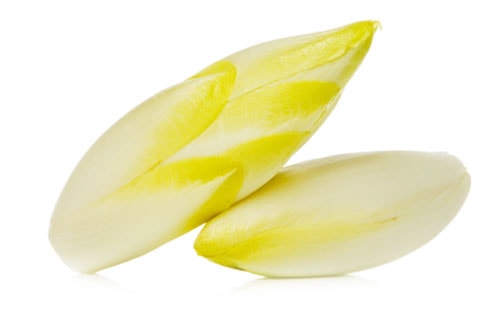
Written By: Sofia Layarda, MPH
Title: Master of Public Health
Alumni: University of California, Berkeley
Last Updated on:

This month’s featured food is the result of a happy accident in the 1800s in Belgium, when a chicory root left in a cellar sprouted white leaves. These leaves became so popular that the vegetable was called “white gold.” Alternatively referred to as Belgian endive, broad-leaved endive, Batavian endive, and escarole, it belongs to the same family as curly endive and radicchio. The endive head is shaped like a bullet, with tightly packed leaves that are white with pale yellowish-green tips (there is also a variety called red endive that has purple tips). When eaten raw, endive has a crisp texture and slightly bitter taste, while cooked endive has a much milder flavor and softer texture.
Table of Contents

A serving of endive provides 100% of the DRI for Vitamin K, which is crucial for proper blood clotting. Endive is also a good source of folate (important in the prevention of neural tube defects, anemia, and cancer) and Vitamin A (which plays a big role in vision health, bone health, reproduction, and immunity). It also provides fiber and has very few calories per serving, making it a more nutritious alternative than iceberg lettuce to use in salads.
When buying endive, look for tightly packed leaves that are free of blemishes and wilt. Avoid any that have browning spots, wet patches, or flabby leaves. Keep the endive heads in the crisper drawer inside the refrigerator and consume soon after purchase (no more than 3 days).
Alumni: University of California, Berkeley – Sofia believes in bringing back fun and pleasure into everyday eating. She loves cooking, and is constantly experimenting with ingredients, creating recipes and trying them out on family and friends. Her latest interest lies in finding realistic and practical ways of environmentally-friendly food/eating habits.
endive, grocery aisle, healthy every month, vegetables, vitamin k